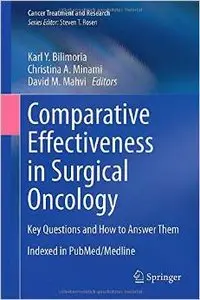Comparative Effectiveness in Surgical Oncology: Key Questions and How to Answer Them by Karl Y. Bilimoria and Christina A. Minami
English | 2015 | ISBN: 3319125524 | 259 pages | PDF | 4,7 MB
English | 2015 | ISBN: 3319125524 | 259 pages | PDF | 4,7 MB
Despite tremendous recent advances in the treatment of most malignancies, there remain several critical questions for each cancer. This particularly true for the surgical management of solid-organ malignancies. Comparative effectiveness is a relatively new term which encompasses the age-old concepts of how best to treat cancer patients. Comparative effectiveness is defined as the direct comparison of healthcare interventions to determine which work best for which patients when considering the benefits and risks. The Institute of Medicine has defined comparative effectiveness research (CER) as the generation and synthesis of evidence that compares the benefits and harms of alternative methods to prevent, diagnose, treat, and monitor a clinical condition or to improve the delivery of care. CER is certainly best done with well-conducted randomized controlled trials. Unfortunately, clinical trials are not always feasible owing to the impracticality of conducting the trial, the considerable cost, and the time required to complete the trial. These challenges are even more pronounced with respect to surgical treatment. Thus alternative approaches may need to be considered in order to address pressing questions in the care of the oncology patient. These approaches may include well-conducted retrospective cohort studies from cancer registries and other data sources, decision and cost-effectiveness analyses, and other novel methodologies. This book lays out the current critical questions for each major malignancy and proposes approaches to gain answers to these pressing questions.



